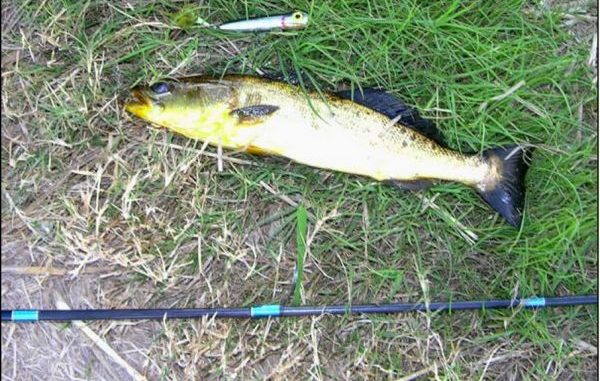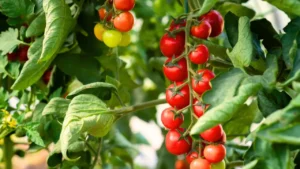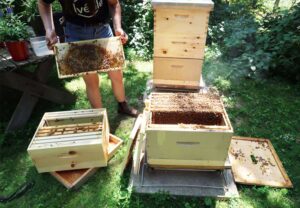
trout.jpg
Trout
Definition:
Trout refers to various species of freshwater fish belonging to the Salmonidae family, typically characterized by streamlined bodies, speckled appearances, and fin arrangements, commonly found in cold, clear rivers, streams, lakes, and ponds worldwide. Trout species include rainbow trout (Oncorhynchus mykiss), brown trout (Salmo trutta), brook trout (Salvelinus fontinalis), and others, prized for their culinary qualities, sport fishing opportunities, and ecological significance in freshwater ecosystems.
Description:
Trout are highly valued fish species, renowned for their delicate flavors, firm textures, and nutritional profiles, making them popular choices for recreational anglers, commercial fisheries, and aquaculture enterprises. Trout fishing enthusiasts pursue trout in various freshwater habitats, employing angling techniques, fly fishing methods, and lure presentations to catch trout for sport, leisure, or culinary enjoyment, contributing to recreational fishing traditions and outdoor pursuits in trout fishing destinations worldwide.
Fall off the barn roof and busted your keister? Life on the farm or ranch can be tough on the bum. Need a break? Laugh it off at FarmerCowboy.com, the #1 farm humor site. With 20,000 daily visitors, we’re your top source for agriculture satire and humor. Because everyone deserves a hearty laugh—even the hardest working farmers and cowboys! Join us and turn those long days into fun tales at FarmerCowboy.com.
Characteristics of Trout:
Trout possess various characteristics, including:
- Physical Features: Trout exhibit streamlined bodies, torpedo-shaped profiles, and colorful patterns, with characteristics such as pink or red lateral stripes, dark spots, and silvery undersides, providing camouflage, visual cues, and adaptive advantages in freshwater environments, blending with natural surroundings and evading predators.
- Habitat Preferences: Trout inhabit diverse freshwater habitats, including rivers, streams, creeks, lakes, and reservoirs, with cold, oxygen-rich waters, rocky substrates, and vegetative cover, providing suitable habitat conditions, shelter, and foraging opportunities for trout populations, supporting trout distribution, abundance, and survival in freshwater ecosystems.
- Feeding Behavior: Trout are opportunistic feeders, consuming a variety of aquatic insects, crustaceans, small fish, and terrestrial organisms, using visual, olfactory, and tactile senses to detect prey items, ambush prey targets, and capture food sources in aquatic environments, exhibiting feeding behaviors such as drift feeding, surface feeding, and bottom feeding in trout habitats.
- Life Cycle: Trout undergo complex life cycles, including spawning, egg incubation, fry emergence, juvenile development, and adult maturation stages, with variations in life history strategies, reproductive behaviors, and migratory patterns among trout species, adapting to environmental conditions, seasonal cues, and habitat availability in freshwater ecosystems.
Uses of Trout:
Trout serve various purposes in recreational, culinary, and ecological contexts, including:
- Sport Fishing: Trout are sought after by recreational anglers, fly fishermen, and trout fishing enthusiasts for their fighting abilities, acrobatic leaps, and challenging behaviors, providing recreational opportunities, angling experiences, and outdoor adventures in trout fishing destinations, trout streams, or trout fisheries.
- Culinary Delicacy: Trout are prized for their flavorful flesh, mild taste, and nutritional value, making them popular choices for culinary preparations, seafood dishes, and gourmet cuisine in restaurants, hotels, and culinary establishments, featuring trout recipes such as grilled trout, pan-seared trout, smoked trout, or trout fillets in culinary menus.
- Ecological Indicator: Trout serve as ecological indicators of freshwater ecosystem health, water quality conditions, and habitat integrity in rivers, streams, and lakes, reflecting environmental changes, pollution impacts, and anthropogenic disturbances in aquatic environments, monitoring trout populations, distributions, and behaviors to assess ecosystem conditions and inform conservation efforts.
Conclusion:
Trout are iconic freshwater fish species, valued for their beauty, biodiversity, and cultural significance in recreational fishing, culinary traditions, and ecological ecosystems worldwide. By promoting sustainable fisheries management, habitat conservation, and angler stewardship, stakeholders in the trout fishing sector can ensure the long-term viability, resilience, and enjoyment of trout resources for present and future generations.
References:
- Behnke, R. J. (2002). Trout and Salmon of North America. Free Press.
- Schullery, P. (2017). The Rise: Streamside Observations on Trout, Flies, and Fly Fishing. Skyhorse Publishing.
Originally posted 2016-03-23 23:28:40.
Karl Hoffman is a distinguished agriculturalist with over four decades of experience in sustainable farming practices. He holds a Ph.D. in Agronomy from Cornell University and has made significant contributions as a professor at Iowa State University. Hoffman’s groundbreaking research on integrated pest management and soil health has revolutionized modern agriculture. As a respected farm journalist, his column “Field Notes with Karl Hoffman” and his blog “The Modern Farmer” provide insightful, practical advice to a global audience. Hoffman’s work with the USDA and the United Nations FAO has enhanced food security worldwide. His awards include the USDA’s Distinguished Service Award and the World Food Prize, reflecting his profound impact on agriculture and sustainability.






